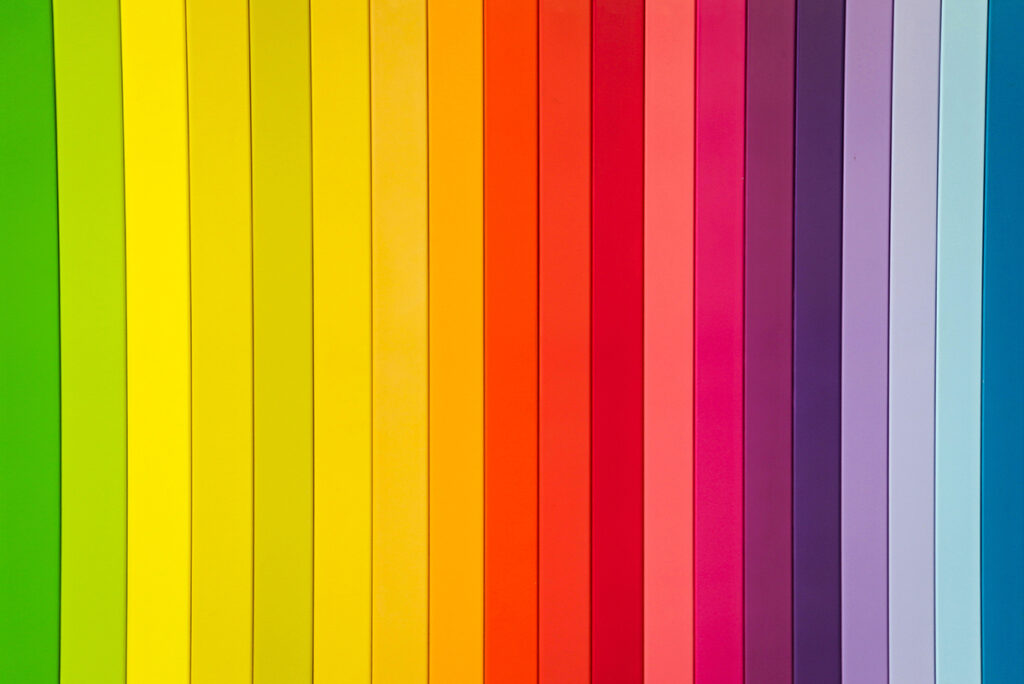When it comes to marketing, every detail matters. From the words you choose to the design of your logo, every element plays a role in how your brand is perceived. One often overlooked but highly influential aspect of marketing design is color. Color psychology in marketing is a powerful tool that can shape consumer perceptions, emotions, and decisions. In this post, we’ll dive into the fascinating world of color psychology and how it can be harnessed to boost your marketing efforts.
Understanding Color Psychology
Color psychology studies how colors can impact human emotions, behaviors, and perceptions. It’s a field explored by psychologists, marketers, and designers alike. The idea is simple: different colors can evoke different feelings and associations in people. Understanding these associations can help you make more informed choices in your marketing materials.
Red: Passion and Urgency
Red is a color that grabs attention immediately. It’s associated with passion, love, and excitement. In marketing, red is often used to create a sense of urgency, which can be particularly effective in sales and promotions. Fast-food chains like McDonald’s and KFC use red branding to stimulate appetite and encourage quick decisions.
Blue: Trust and Stability
Blue exudes trust, reliability, and professionalism. It’s a favorite for financial institutions, tech companies, and healthcare providers. Blue can help create a sense of security and competence, making customers feel more comfortable doing business with you.
Green: Health and Growth
Green is closely linked to nature, health, and growth. Eco-friendly and organic brands commonly use it to convey a commitment to the environment. Additionally, green can represent financial growth and prosperity, making it popular among investment and financial planning firms.
Yellow: Optimism and Clarity
Yellow radiates positivity, optimism, and clarity. It’s often used to catch attention and highlight important information. Brands like Ikea and Best Buy incorporate yellow into their logos and marketing materials to create a cheerful and approachable image.
Black: Sophistication and Luxury
Black is synonymous with sophistication and luxury. High-end brands like Chanel and Rolex frequently use black to convey exclusivity and elegance. It’s a color that signifies prestige and quality.
Orange: Energy and Creativity
Orange combines the energy of red with the cheerfulness of yellow. It’s a color that exudes excitement and creativity. Brands like Nickelodeon and Fanta use orange to appeal to a youthful and energetic audience.
How to Use Color Psychology in Marketing
Understanding the emotional impact of colors is one thing, but successfully incorporating them into your marketing materials is another. Here are some tips to get you started:
- Know Your Audience: Consider your target audience’s preferences and cultural associations with colors. What resonates with them?
- Consistency: Use a consistent color scheme across all marketing materials and your brand identity to build recognition and trust.
- Context Matters: The context in which you use a color can alter its meaning. For example, depending on the context, red can signify danger or excitement.
- Test and Iterate: Don’t be afraid to experiment. Run A/B tests to see which color schemes resonate best with your audience.
- Consider Industry Norms: Look at the colors commonly used in your industry. While you want to stand out, you also want to appear familiar to your target audience.
Conclusion
Color psychology in marketing is a fascinating and effective tool that can significantly impact how consumers perceive your brand. By understanding the emotions and associations tied to different colors, you can create marketing materials that resonate with your audience on a deeper level. So, the next time you’re designing a logo, website, or promotional campaign, remember the power of color psychology and use it to your advantage.

